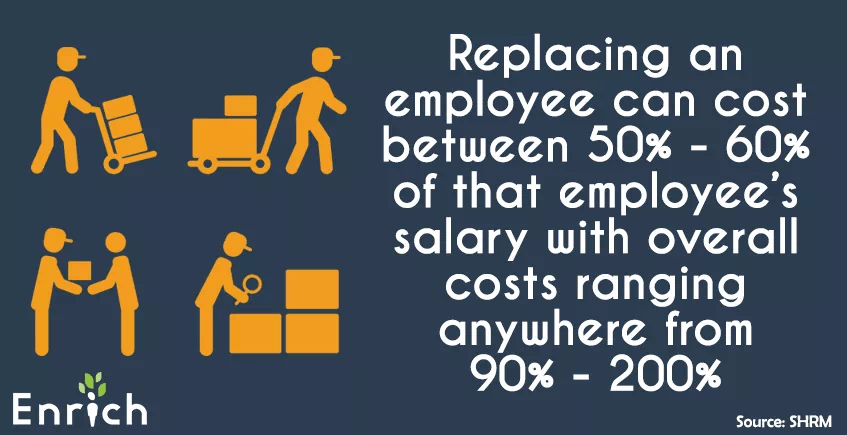The Talent/Labor Gap Opportunity
Part I: Recruiting
This last “offseason employment/recruiting cycle” has been very busy for the PGA Career Services department. Here in the PNWPGA and throughout the entire country, many management level positions have been posted and filled since last October. On top of this, there have been times when we’ve had more than 40 assistant golf professional or similar positions posted on our Section’s part of the PGA.org Job Board. Clearly, this is a real problem for our industry and it has been exacerbated by the challenges many outside of the PNWPGA face if they want to relocate here to work (including higher costs for housing, political trends and policies, inflation, etc.).
We also know that the golf industry is not the only industry facing a labor shortage. Recent estimates say there are approximately 11M+ open jobs in the US right now, (per the US Labor Bureau on the last business day of January 2022.) And, as we have all seen, there seems to be far less (perhaps 40% less) people who are actively looking for work. Again, this is a threat to our service models, to our plans for the coming peak golf season and… as I’ve been saying and writing in emails, “there are no silver bullets here.” Are there any solutions? Here are some thoughts and ideas.

Stop Your Employee Turnover Issues
The “cost of replacing an employee” is one of the hidden in plain sight costs of poor employee retention. According to the Society for Human Resource Management (SHRM.org), it “costs a company 6 to 9 months of an employee’s salary to replace him or her. For an employee making $60,000 per year, that comes out to $30,000 – $45,000 in recruiting and training costs.”
In the golf business, employees leave organizations for a multitude of reasons. Some of them are the usual and we can’t do much about them, especially with our hourly and entry-level employees that we count so heavily in our seasonal operations. Of course, our budgets generally plan for this turnover, but it’s now becoming harder to fill them than key “backbone” positions. Some employees find better paying jobs while others go back to school. And now, as we hit mid-March, this one-two punch of employee turnover and a very competitive “recruitment market” is hitting our business pretty hard.
Let’s cover the basics of employee recruiting and retention – Create a Culture of Equipping, Engagement and Excellence.
- Build a brand of being an “Employer Who Equips”
- Do you have successful “alumni” who used to work at your facility? Talk about how you developed them, invested in them in your job posts and related recruiting efforts.
- If you don’t have the story to tell – start making it a reality so you can tell it next year or next season.
- Become a Gardener, and Grow Your Own Talent
- Start building future assistant professionals out of part time, seasonal, “second career” and similar staffers. PGA Junior League and Drive, Chip & Putt efforts have been around since 2014 for most of us. That was eight years ago. How many of those kids are now college age, working adults who may have gone on a standard working path and have found they hate what they’re doing? If you were an effective coaching influence to them, they may be looking for a chance to get in the industry that will bring them to a golf career. How many of us were in that same place when someone “tapped us on the shoulder” and invited us to consider a career in golf? They can’t say yes to the business if no one is asking them to join up.
- Invest in the education of ALL your assistant professionals, not just your top ones. If an employee has the right people skills and attitude, the next question should be, “Can they pass their PAT? Or at least the qualifying score?” If they can, paying all of their fees to get started in the program or at least part of them (including their qualifying level, their PAT fees and even Level 1) is still only around $1,100. If that helps build a strong employee who in turn ends up being a part of your team over the next 3-4 seasons, is that initial investment not well worth it? I say absolutely.
- Don’t forget about the new PGA Affiliate Program. This could be the answer for those people who are “second career”, retired veterans or similar who have the “right stuff” when it comes to people skills, work ethic and attitude (but will not be able to pass the PAT).
What other ideas or solutions have you seen or would like to see that might apply in the narrative above? I would love to hear from you. Thank you for reading this during this issue of the Foreword Press. Looking forward to seeing many of you at Section tournaments and Chapter pro-ams.
Employment Opportunities
Click here to access the PNW PGA job postings
Monte Koch, PGA Certified Professional, CEIP
PGA Career Services | PGA of America
Business, Operations & Career Coach in the Pacific NW and Rocky Mountain PGA Sections
Email: Mkoch@pgahq.com | Cell: 206-335-5260